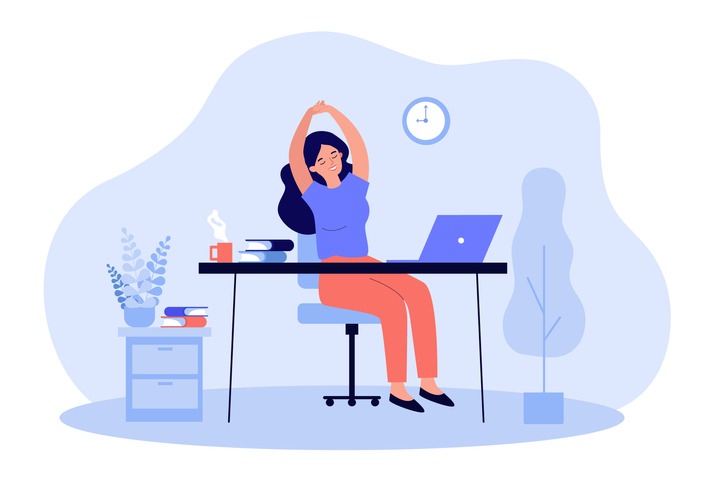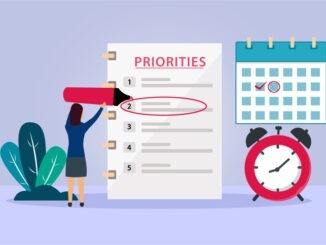
Being productive doesn’t mean working non-stop – challenge the ‘grind’ culture and learn how and why you should take better breaks at work.
CREDIT: This is an edited version of an article that originally appeared on Harvard Business Review
For many of us, being productive means spending more time working. It seems intuitive that the more time we spend on job tasks, the more we can get done. And not surprisingly, the popular literature is rife with advice on how to maximise work time.
For example, the ‘daily routines of CEOs’ often include things like waking up at 4 am, working on the weekend, and even being ‘strategic about how often you go to the bathroom.’ To tackle an ever-increasing workload, many workers choose to grind through, skip lunch, and stay after hours.
But the cost of being ‘always-on’ is high. More than half of employees (59%) report feeling burnout according to a recent survey from Aflac. Engagement has taken the opposite turn and is declining among U.S. workers. Alarmingly, both high burnout and low engagement rates are associated with hindered performance. What can we do to address our declining well-being while maintaining performance?
Why is taking breaks beneficial for well-being and performance?
Like batteries that need to be recharged, we all have a limited pool of physical and psychological resources. When our batteries run low, we feel depleted, exhausted, and stressed out.
Pushing through work when very little energy is left in the tank puts a strain on well-being and work performance. In extreme cases, nonstop work can lead to a negative spiral: A worker tries to finish tasks despite their depleted state, is unable to do them well and even makes mistakes, resulting in more work and even fewer resources left to tackle those same tasks. This means that the more we work, the less productive and more exhausted we can become. Think about reading the same line for the fifth time, for example, and still not absorbing it.
The good news is that taking breaks can help employees to recharge and short-circuit the negative spiral of exhaustion and decrease productivity. However, not all breaks are equal in terms of their effects.
What types of breaks are more effective for improving well-being and performance?
Breaks come in many different shapes and forms: exercising, browsing social media, going for a short walk, socialising with others, taking a nap, grabbing lunch, and so on. However, HBR’s systematic review shows that not all break types are equally effective. In other words, it matters how to pause work. Here are some common break elements to consider:
Break length and timing
A longer break does not necessarily equate to a better break. Disengaging from work only for a few minutes but on a regular basis (micro-breaks) can be sufficient for preventing exhaustion and boosting performance.
For example, workers can take short breaks for snacking, stretching, or simply gazing out of the window. Further, the timing of the break matters — shorter breaks are more effective in the morning, while longer breaks are more beneficial in the late afternoon. This is because fatigue worsens over the workday, and we need more break time in the afternoon to recharge.
Location of breaks
The place breaks take place can make a big difference in terms of recovery. Both stretching at a desk and going outside for a short walk seem like very similar break activities, but they might substantially differ in their recharging potential.
Break activity
Engaging in physical activity during a break is effective for improving both well-being and performance. Exercising is an especially valuable recovery tool for mentally demanding work. However, the positive effects of this break type are short-lived, and employees need to exercise on a regular basis to yield its benefits.
Furry break companions
One study in HBR’s review showed that interactions with a dog can lower levels of cortisol hormone, an objective indicator of stress. More research is needed in this area, as the effects on performance remain unclear.
What can managers and organisations do to encourage breaks?
The mere availability of breaks does not guarantee benefits. Workers may not use their breaks in the most efficient ways or take them at all. As decision-makers and role models in organisations, managers are in an important position to encourage effective work breaks. This can be achieved in several ways:
Fostering positive attitudes toward breaks
While employees are generally positive about breaks and report that they are beneficial for performance, this sentiment is not always shared by managers. This can deter people from recharging.
Thus, it is critical that managers are informed about the performance-related benefits of work breaks.
Taking breaks themselves
Managers can communicate the importance of taking breaks by taking the most effective types regularly, which employees can mimic. For example, a manager who regularly walks her dog in a nearby park can communicate to her employees that she’ll be stepping away from work for a bit to do so.
Scheduling dedicated break times
HBR’s review shows that many employees are unable to take regular breaks or are dissuaded from doing so because of the stigma; thus, we recommend that managers and organisations schedule dedicated break times.
Such break times need to be implemented with care. Rigid break schedules, such as mandating employees stop working only at a certain time and of a predetermined length, reduce employee autonomy and can even have harmful effects on employees.
HBR recommends offering break periods at a certain length such as one hour a day and leaving when and how often they want to take their breaks at the employee’s discretion.
Creating spaces for breaks
As we highlighted above, the location of breaks can play an important role in maximising their benefits. To further yield the benefits of outdoor breaks, you could also make it an off-leash dog park where employees who enjoy interacting with animals can do so.
Organisations with employees working from home can also make use of the spaces available to them by arranging online park meetings where remote workers can join the meeting while walking or sitting at an outdoor space that is convenient to them.
Employee performance has always been a concern for organisations, and more organisations are making efforts to address employee well-being today. Work breaks as a promising tool to improve both. Organisations need to recognise the importance of breaks and engage in deliberate efforts to facilitate effective breaks.


Be the first to comment